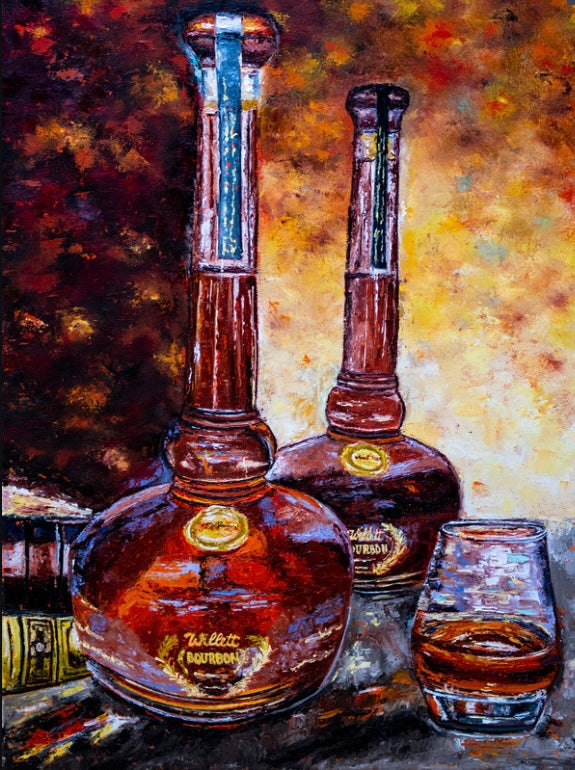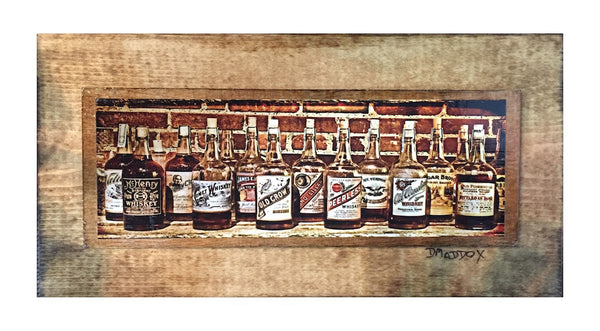The Value of Whiskey Art in Celebrating Heritage and Workmanship in the Beverage Sector
The detailed relationship between scotch art and the celebration of heritage and workmanship within the drink sector can not be overstated. With attentively designed bottles and labels, bourbon brand names envelop their historical roots and the artisanal skills that specify their production methods.
The Historical Origins of Whiskey
At the heart of scotch's allure exists an abundant tapestry of historical roots that trace back to ancient people. The beginnings of whiskey can be connected to the distillation practices of the Sumerians and Babylonians around 2000 BCE, where very early kinds of fermented grain drinks began to arise. It was in the Center Ages that the art of distillation evolved substantially, particularly in Ireland and Scotland, leading to the production of bourbon as we understand it today.
The term "bourbon" itself originates from the Gaelic word "uisce beatha," meaning "water of life." This phrase highlights the cultural importance of bourbon in Celtic cultures, where it was frequently associated with routines, celebrations, and common bonding. By the 15th century, purification became an acknowledged craft within reclusive areas, leading the way for the facility of legal distilleries.
As trade paths expanded, whiskey's popularity grew, going beyond regional boundaries and catching the rate of interest of lovers worldwide. Whiskey Art. This historic trip mirrors not just the workmanship behind scotch manufacturing however also its important duty in social and social contexts, marking it as a significant drink throughout history
Artistic Expression in Branding
Whiskey branding stands as a compelling intersection of creativity and business, where visual identification plays an essential duty fit customer understanding. The aesthetics of bourbon labels, product packaging, and marketing materials reflect not just the brand's story however additionally its core values and heritage. Through creative expression, distilleries convey a story that resonates with customers, evoking emotions and triggering links.
The usage of color, typography, and images in branding offers to differentiate items in a saturated market. For instance, standard motifs might evoke a sense of authenticity and workmanship, while contemporary designs can represent innovation and forward-thinking. This strategic creative instructions boosts brand name acknowledgment and loyalty, permitting customers to create an individual partnership with the scotch they choose.
Additionally, artistic expression in branding often offers as an event of local heritage. Distilleries often incorporate local signs or historic references right into their styles, creating a local color that invites customers to take part in a more comprehensive cultural experience. Eventually, the virtuosity behind whiskey branding not only enhances visual appeal yet also improves the total narrative of the brand name, cultivating a deeper admiration for the workmanship and heritage ingrained in each bottle.
Workmanship in Bottle Style
The virtuosity apparent in bourbon branding prolongs beyond visual identity to encompass the workmanship involved in bottle design. Each container functions as a vessel not simply for the spirit within, yet also for the tale it tells concerning its origin, practice, and high quality. The style procedure requires thorough interest to detail, as aspects such as material, closure, and form contribute considerably to the total perception of the bourbon.
Workmanship in container style involves choosing top notch glass that can improve the whiskey's color and quality, while likewise supplying a tactile experience for the consumer. The shape of the bottle should be both aesthetically attractive and functional, typically reflecting the heritage of the brand. Lots of distilleries select special shapes or embossed logo designs that evoke a sense of credibility and history.
Furthermore, the tag design and typography play an essential role in connecting the brand's story. Limited Edition. A well-crafted container not only captivates the consumer's eye yet additionally reinforces the brand name's commitment to high quality and custom. This way, the workmanship of container design becomes a vital element of the bourbon experience, combining artistry with a profound respect for heritage
Cultural Significance of Scotch Art
Celebrating practice and workmanship, the social value of whiskey art goes beyond mere appearances, linking with the social and historical narratives of the regions where it originates. Each container acts my site as a canvas, illustrating the one-of-a-kind stories, mythology, and practices that have actually formed local whiskey-making practices. The complex designs frequently mirror the heritage of the distillers, integrating icons and themes that resonate with the society and worths of their communities.

Furthermore, whiskey art plays an essential function in communal celebrations and parties, functioning as a concrete link in between individuals and their shared experiences. By appreciating the virtuosity in whiskey packaging, customers cultivate a much deeper understanding and regard for the craft, ultimately improving their pleasure of the drink itself.
Modern Trends in Bourbon Presentation
In recent times, the presentation of whiskey has actually developed to mirror contemporary tastes and patterns while still recognizing traditional craftsmanship - Bourbon Art. Distilleries are significantly concentrating on aesthetic components that enhance the general alcohol consumption experience, linking the void in between heritage and modernity
Cutting-edge container layouts have actually emerged, typically including lasting products and creative tags that inform compelling stories. Many brands currently work together with regional musicians, infusing their items with unique visual expressions that reverberate with customers. Furthermore, limited-edition releases are frequently packaged in collectible containers, adding value and allure for lovers.

Final Thought
In conclusion, bourbon art offers as a crucial channel for sharing the heritage and workmanship intrinsic in the drink industry. Via complex branding, cutting-edge container styles, and culturally substantial imaginative elements, bourbon brands effectively honor their traditions and connect with customers.


Workmanship in bottle design entails choosing top quality glass that can boost the bourbon's shade and clearness, while likewise offering a tactile experience for the customer. In this method, the craftsmanship of container layout becomes a crucial element of the bourbon experience, combining artistry with an extensive respect for heritage.
In final thought, bourbon art serves as an important avenue for expressing the heritage and craftsmanship inherent in the drink industry.
Comments on “Realism Art in the Whiskey Industry: Depicting Moments of Distillation”